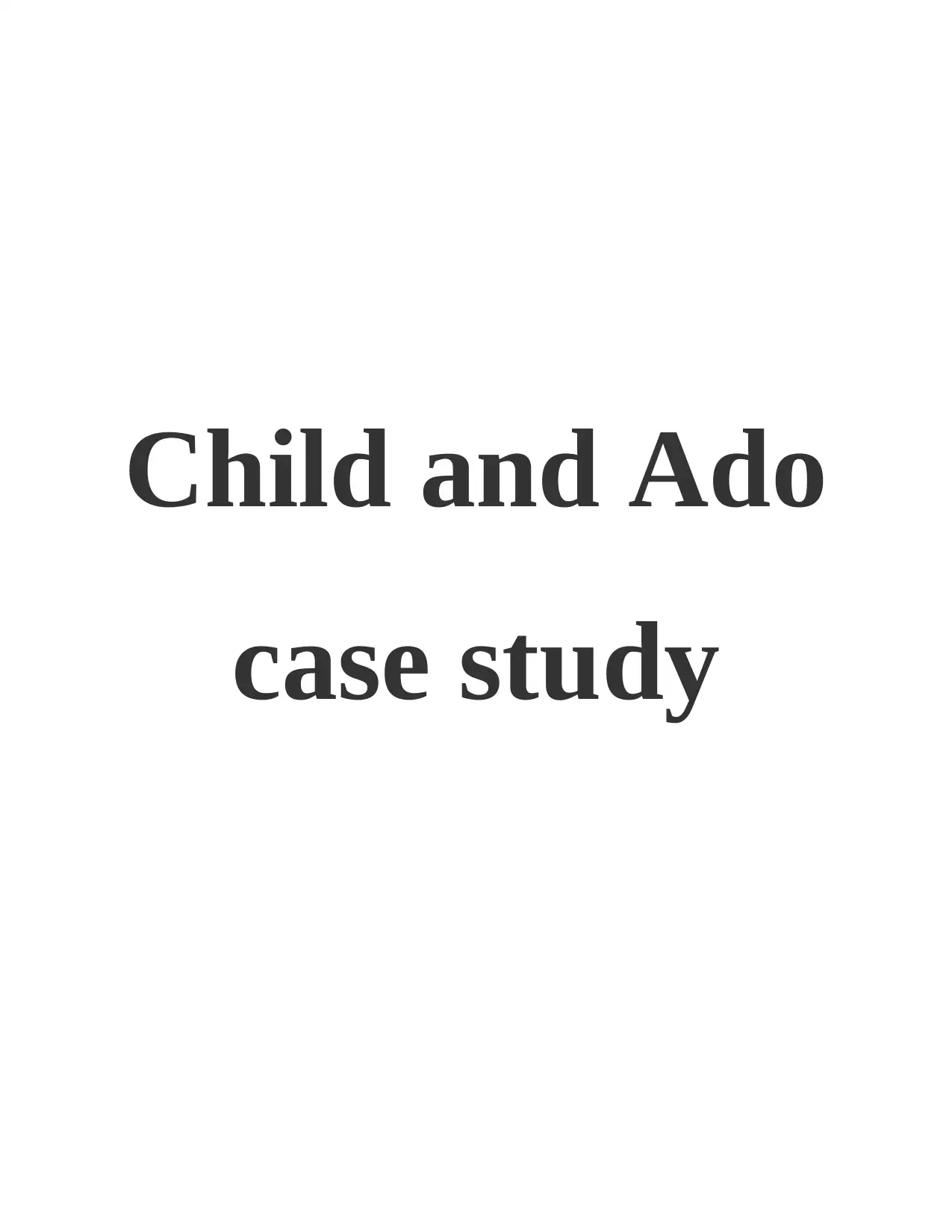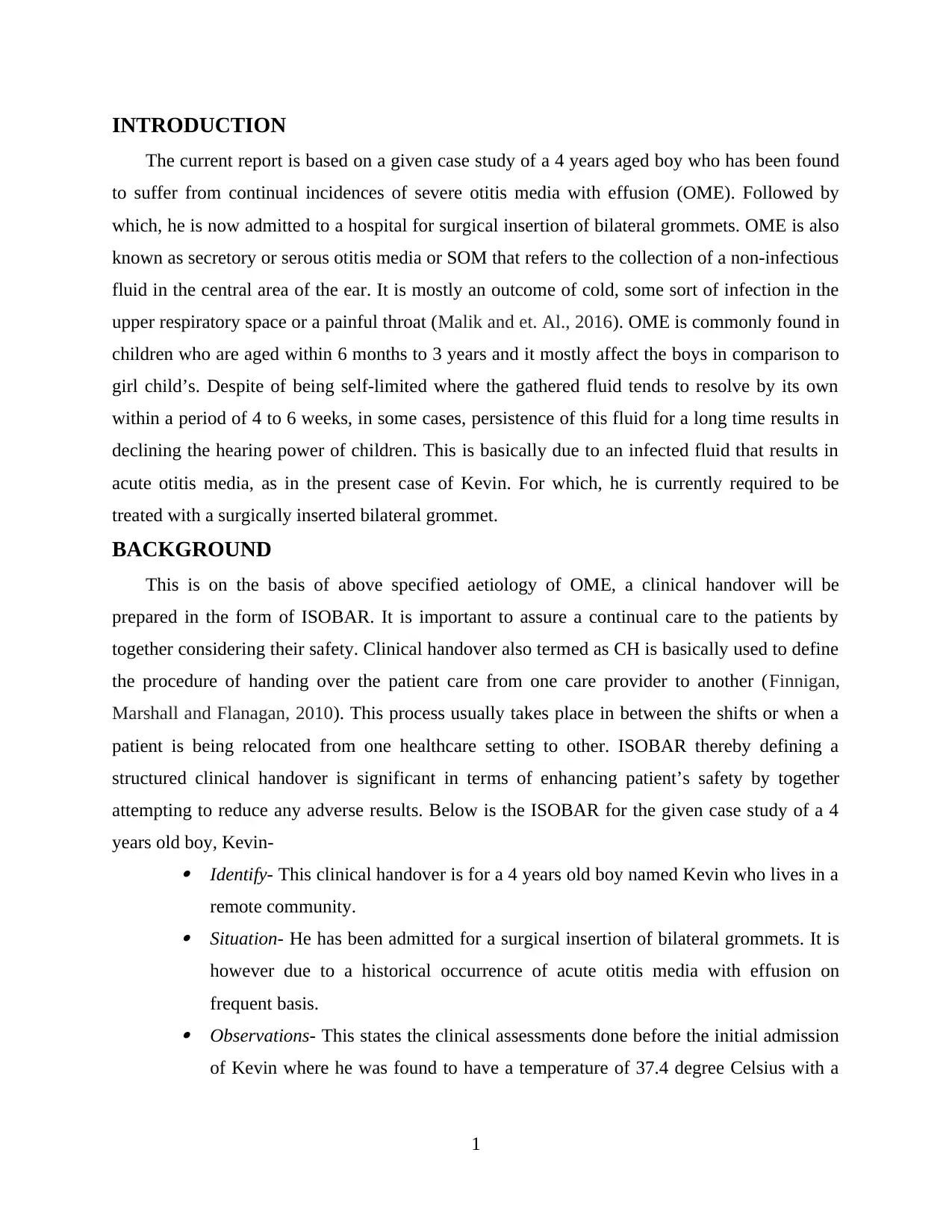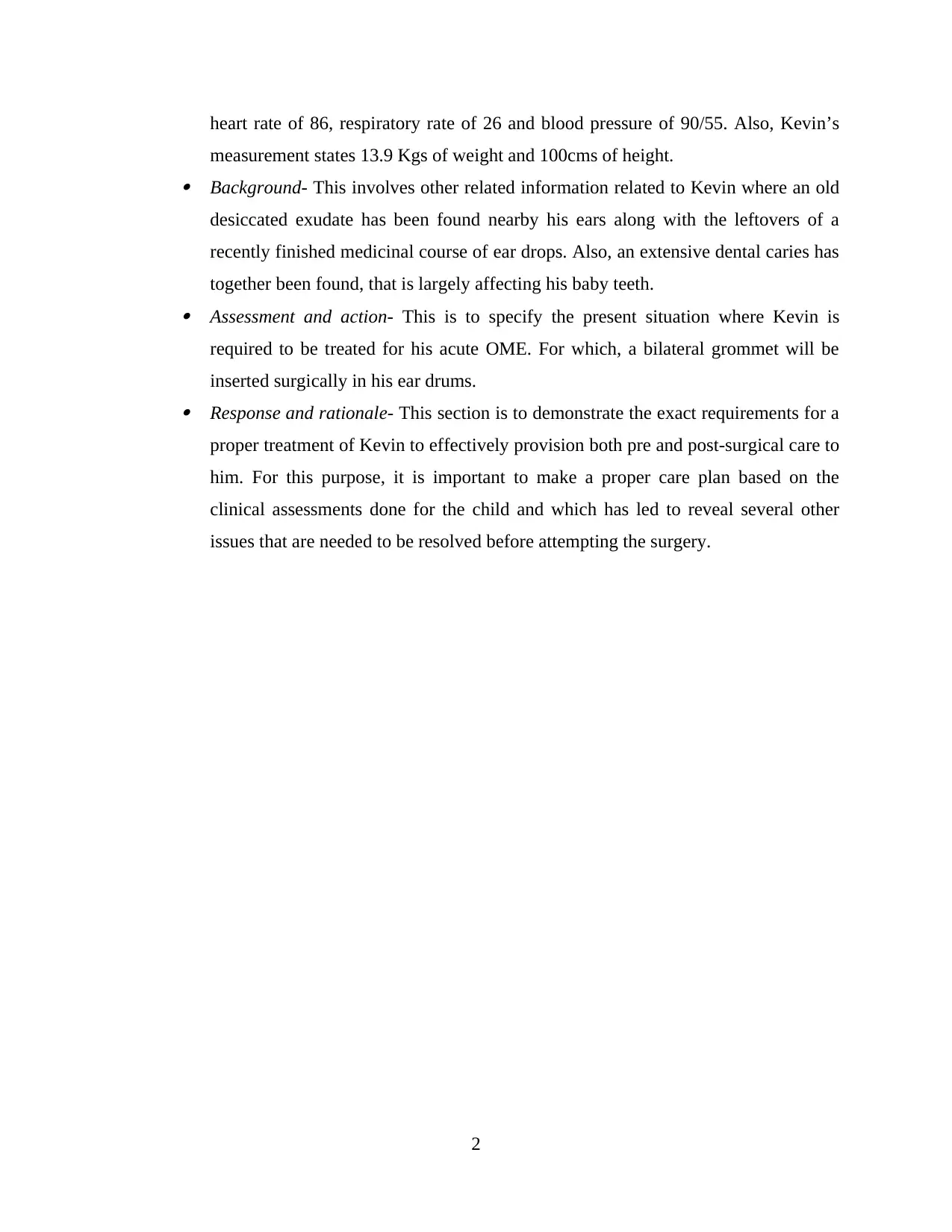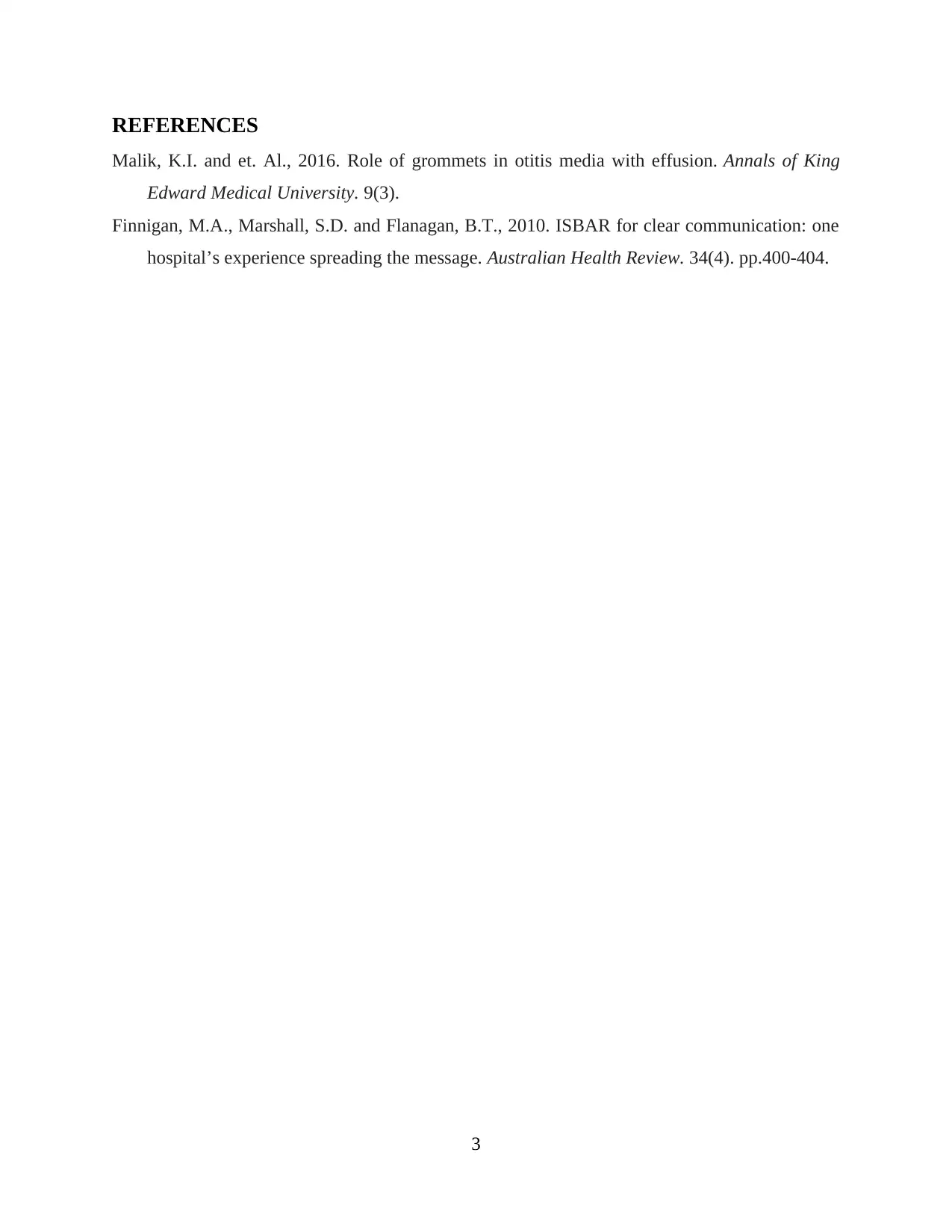Case Study Analysis: Kevin's Otitis Media and ISOBAR Handover
VerifiedAdded on 2020/07/22
|5
|732
|43
Case Study
AI Summary
This case study presents the scenario of a 4-year-old boy, Kevin, suffering from recurrent severe otitis media with effusion (OME), leading to his admission for bilateral grommet insertion. The report provides a background on OME, its causes, and prevalence, emphasizing the importance of timely intervention to prevent hearing loss. The core of the study involves a clinical handover prepared in the ISOBAR format (Identify, Situation, Observation, Background, Assessment and Action, Response and Rationale) to ensure continuous patient care. The ISOBAR details Kevin's condition, including his history of OME, clinical observations (temperature, heart rate, etc.), and relevant background information (desiccated exudate, dental caries). The assessment highlights the need for grommets, and the response section outlines the pre and post-surgical care plan. The case study underscores the significance of structured communication in healthcare and the importance of a comprehensive approach to patient care, addressing not only the immediate medical needs but also related issues like dental health before the surgery.
1 out of 5









![[object Object]](/_next/static/media/star-bottom.7253800d.svg)